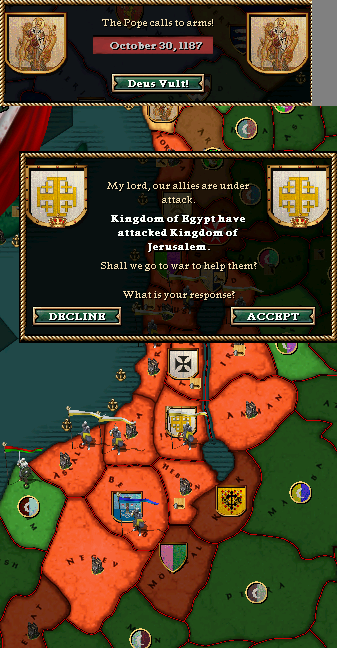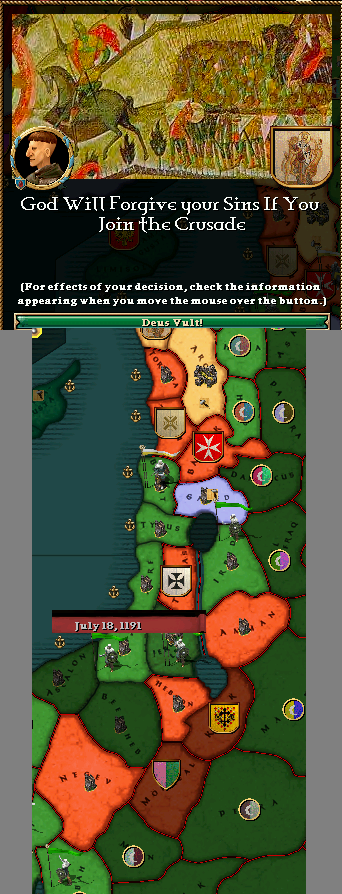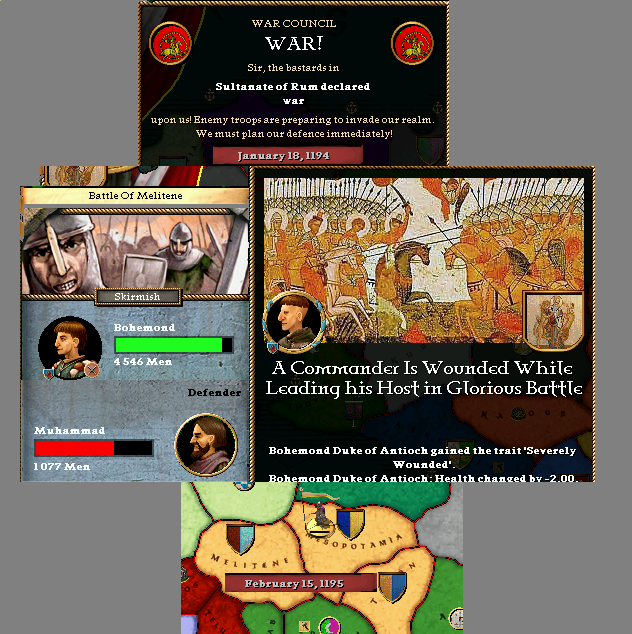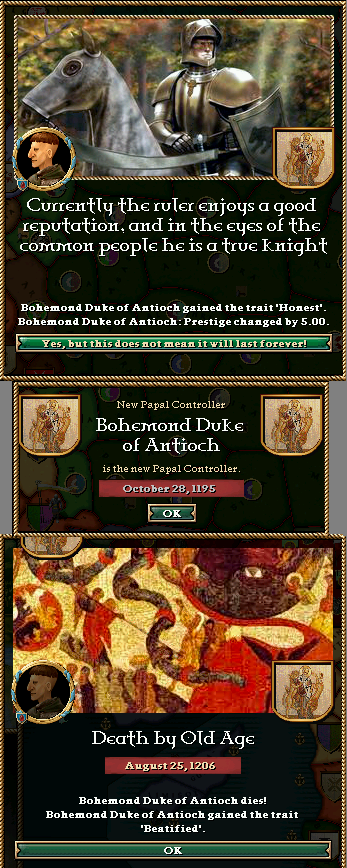Bohemond III the Stammerer
House of Poitou
1144-1206

House of Poitou
1144-1206

Prince of Antioch 1160-1206
Son of Raymond of Poitiers, Prince Consort of Antioch and Constance of Antioch
Married :
-Orgueilleuse d’Harenc
-Theodora Comnenos, daughter of John, Duke of Cyprus
-Sibylle
-Irene Comnenos, sister of Manuel, King of Armenia
Issue :
-From Orgueilleuse :
-Raymond
-Bohemond
-From Theodora :
-Manuel
-From Sibylle :
-Hubert
-Philippe
-Alix, who married Constable John
-Isabeau, who married Duke Guy of Bourbon
-Agnes
-From Irene :
-Foulques
-Cecile
-Marthe
Even if he could’ve assumed the rule over Antioch on his own from his father Raymond’s death in 1149, Bohemond III was recognized as the ruler of the Principality of Antioch after his stepfather’s emprisonment in 1160, with the help of King Baldwin III of Jerusalem. His mother’s exile in 1163 assured him as the sole ruler of Antioch. However, his early reign was plagued with defeats : following an offensive at Harim against Nur Ed-Din with Count Raymond III of Tripoli, he was captured and released under a ransom of 150,000 dinars, paid by Basileus Manuel Comnenus, his nominal overlord and brother-in-law ; Bohemond had to allow a Greek Patriarch to be installed in Antioch, much to the rage of the Latin Patriarch. He subsequently invaded Armenia in 1172, due to the alliance of the local ruler to Nur Ed-Din, and returned to besiege Harim in 1177 with Raymond III and Count Philip of Flanders, but without success. He also tried to convince the Leper King, Baldwin IV, to have his sister and heir Sibylla marry its ally Baldwin of Ibelin, without success. He was also excommunicated by Pope Alexander III for leaving his wife Theodora to a woman named Sibylla, « a practice of evil arts », but remained steady, persecuting the upper clergy, the mediators and remaining with Sibylla that would give him five children.

The outbreak of the Third Crusade...
Bohemond also prepared for the awaited Arab assault on the Crusader States by Saladin, negotiating a peace treaty with the latter in 1883 and selling Tarsus to Armenia in order to make Antioch more easily defendible. The Arab finally occured in 1188, a few months before Saladin’s premature death, and Jerusalem immediately came under attack, and Pope Innocent III proclaimed the Third Crusade which had to conquer Egypt. Not taking part in the defense of Jerusalem, that felt in 1189, Bohemond besieged the Alamut Fortress, belonging to the Assassins’ Sect, close to the Antiochene state : the fortress, deemed as impregnable, would fall for Christmas 1189, a small compensation for the Crusaders. Due to his personnal success, Innocent III promised to reintegrate Bohemond into the Church if he took the Cross : which he did…But only in name.

...And its consequences.

The Antiochene expansion in Anatolia.
Bohemond took advantage of the collapse of the Sultanate of Rum to attack Metilene, one of the remnants of the past Seljuk Empire, along with the Kingdom of Georgia. The war would last from 1194 to 1195, but Bohemond was wounded while fighting, his beloved Sibylla died while he was in eastern Anatolia and his second son, Bohemond, actively plotted in order to take control of Antioch while his father was abroad. Thanks to the Latin Patriarch and other loyalists, Bohemond’s plot was thwarted and the pretender was to be killed while defending his life. However, the following year, during a skirmish with the Sheikdom of Erzurum, his eldest son and heir Raymond was killed.
However, Bohemond would make other gains during the last years of his long reign : taking advantage of the total weakness of the so-called Kingdom of Jerusalem, cut in two by the still powerful Arabs, Bohemond took over the former county of Tripoli after a short war against Jerusalem and the Knights Templar. He also acquired Damascus in 1203, as the city rebelled against the Ayyubid Empire, and an expedition against the Abbassid territories in Armenia proved quite ill fated, as Bohemond had to pay the Caliph to avoid retribution on his Principality. Having been wounded five times during his long reign, Bohemond III finally died peacefully on August, 26 1206, at 62. He was succeeded by his grandson Geoffroy, the son of Raymond. Due to his closeness to three successive popes (Innocent III, Stephen X and Clement III) and his effectiveness as a Crusader (in contrast to the faltering Lusignans), Bohemond III was beatified in 1348.

The legend of the "Good Prince Bohemond" was maintained to these days

-From the Beginner’s Guide to the Crusader States, Charles Atkinson, Resurrection Press, 1998
Last edited:


